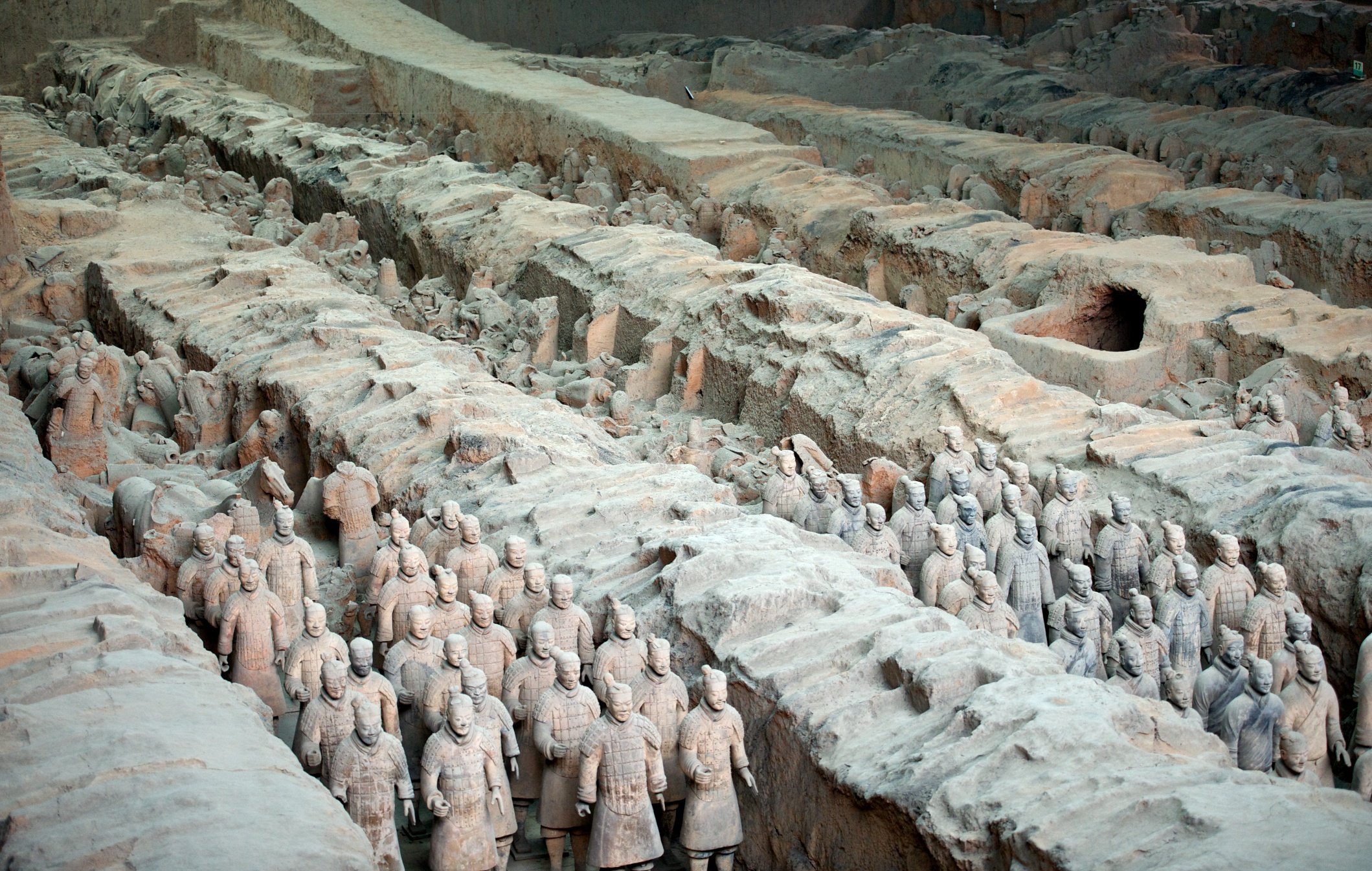
The Terracotta Army just got a little more formidable.
More than 200 additional funerary sculptures have been uncovered near the tomb of China’s first emperor, Qin Shi Huang, in Xi’an, the capital of China’s Shaanxi Province. The relics join the 8,000 already unearthed soldiers that constitute the Terracotta Army, created 2,200 years ago to protect the emperor in the afterlife.
The discovery, first announced by the country’s state-run news agency, came during a decade-long excavation of the first of four pits at the mausoleum, a 4,300-square-foot area where some 6,000 warriors were previously found. Archaeologists uncovered roughly 200 new warriors, 12 clay horses, and two chariots, as well as a number of bronze weapons, over the past 10 years.
According to Shen Maosheng, the archeologist who led the dig, the new findings provide researchers with a clearer picture of how the ancient Chinese military operated. For instance, Maosheng notes that most of the newly uncovered figures are depicted either holding poles or bows—a clue that reveals the soldiers’ battlefield roles and responsibilities.
The 2,200-year-old Terracotta Army at the Qin Terracotta Warriors and Horses Museum in 2005. Photo by China Photos/Getty Images.
One of the world’s most treasured historical artifacts, the army was first discovered by a group of local farmers trying to dig a well roughly a mile east of Emperor Qin’s tomb in 1974. They stumbled upon a vault that held thousands of human-sized military figures, each unique in appearance, all lined up in battle formation.
Since then, a museum facility with viewing theaters has been erected around the excavation sites. (The largest pit is sheltered by a building the size of an airplane hanger.) Today, several million people visit the site each year.
Researchers believe it took 700,000 laborers as much as 30 to 40 years to complete the army and its tombs, and that there are still likely more vaults and warriors to be discovered. And yet, it may not even be Qin Shi Huang’s most ambitious contribution to his country: the first Emperor was also responsible for the creation of the Great Wall of China.